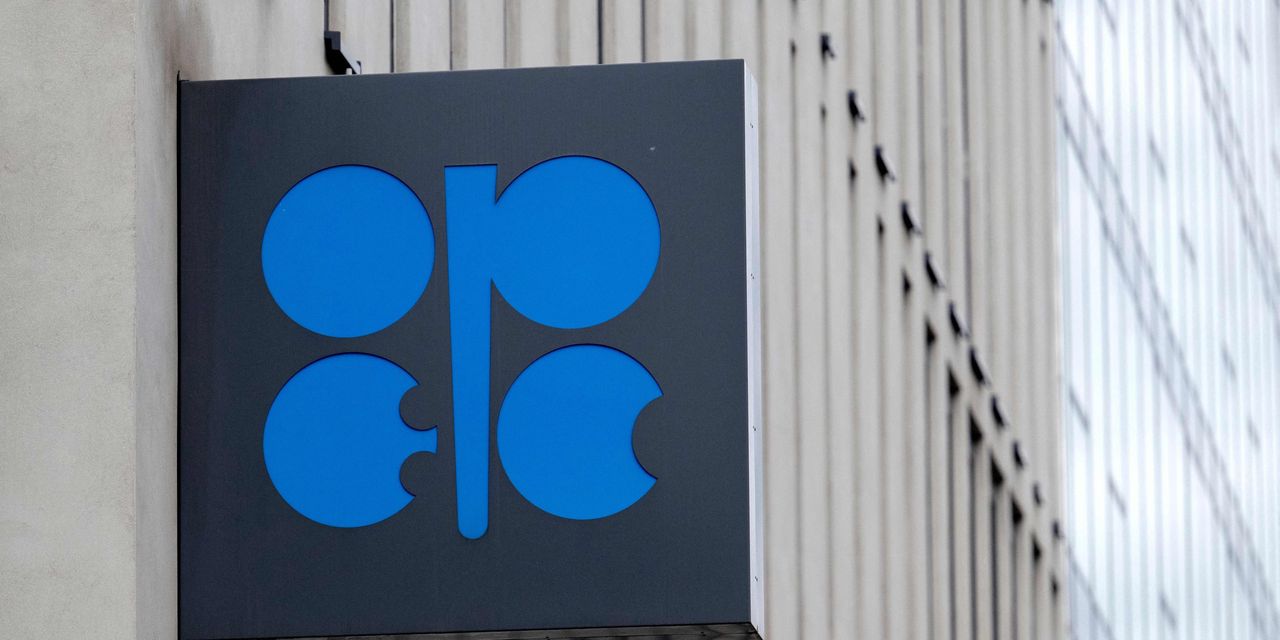Oil futures ended sharply higher Monday, holding gains scored after OPEC+ announced a production cut of more than 1 million barrels a day.
The announcements on Sunday by Saudi Arabia and other major producers caught traders off guard, with the U.S. benchmark seeing its biggest one-day percentage gain since April 12, 2022, according to Dow Jones Market Data, while global benchmark Brent logged its biggest gain since March 21, 2022. Both West Texas Intermediate and Brent saw their highest finishes since March 6.
Price action
-
West Texas Intermediate crude for May delivery
CL.1,
-0.22% CL00,
-0.22% CLK23,
-0.22%
jumped $4.75, or 6.3%, to $80.42 a barrel on the New York Mercantile Exchange. -
June Brent crude
BRN00,
-0.15% BRNM23,
-0.15% ,
the global benchmark, rallied $5.04, or 6.3%, to settle at $84.93 a barrel on ICE Futures Europe. -
May gasoline
RBK23,
+0.44%
gained 2.9% to $2.7575 a gallon, while May heating oil
HOK23,
+0.08%
jumped 1.6% to $2.7575 a gallon. -
May natural gas
NGK23,
-0.52%
slumped 5.4% to $2.097 per million British thermal units.
Market drivers
Saudi Arabia and other OPEC+ members announced Sunday that they would make production cuts totaling around 1.16 million barrels a day beginning in May, while Russia said it would extend a March cut of 500,000 barrels a day through the end of the year. OPEC+ is made up of the Organization of the Petroleum Exporting Countries and its allies, including Russia.
“Given the lack of alternative non-OPEC supply, the group has significant pricing power relative to the past,” said Stephen Innes, managing partner at SPI Asset Management, in a note. “And to the dismay of global leaders, OPEC has decided to draw a hard line at Brent $80 per barrel for self-serving economic interests. But this surprise cut is consistent with their new doctrine to act pre-emptively because they can do so without significant losses in market share.”
See: Why OPEC+ cut oil production: 6 things investors need to know
The move came after Saudi officials were reportedly irritated by recent comments from U.S. Energy Secretary Jennifer Granholm, according to the Financial Times. Granholm said it would be difficult for the U.S. government to take advantage of lower oil prices to begin refilling the Strategic Petroleum Reserve due to maintenance issues.
See: Oil stocks jump on Saudi oil production cut
The move also comes as speculative traders took outsize short positions on crude, Innes and other analysts said. Those traders were forced to unwind their bets on falling crude prices, accelerating the surge higher.
Meanwhile, analysts said previous expectations that the crude market would move into deficit later this year have been pulled forward.
“Even though, like OPEC, we expect only subdued demand growth this year, the scale of supply cuts will send the oil market balance into a deficit in 2023, with an even larger deficit in [the fourth quarter],” said Caroline Bain, chief commodities economist at Capital Economics, in a note. Capital Economics had previously forecast a deficit in the fourth quarter but had expected the market to be in balance in the year as a whole.
Questions remain over how strongly OPEC+ countries will comply with the voluntary cuts. Analysts said uncertainty over the demand outlook may also serve to limit upside after the initial surge.
Read the full article here










